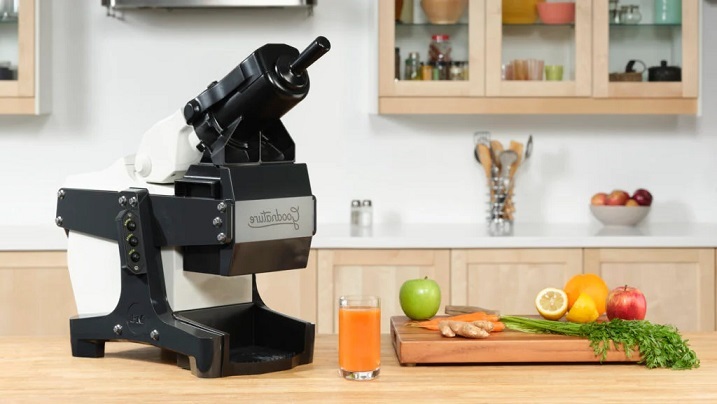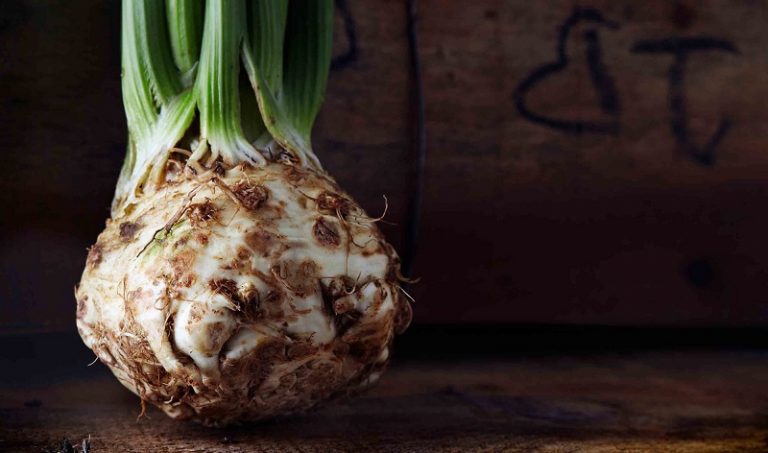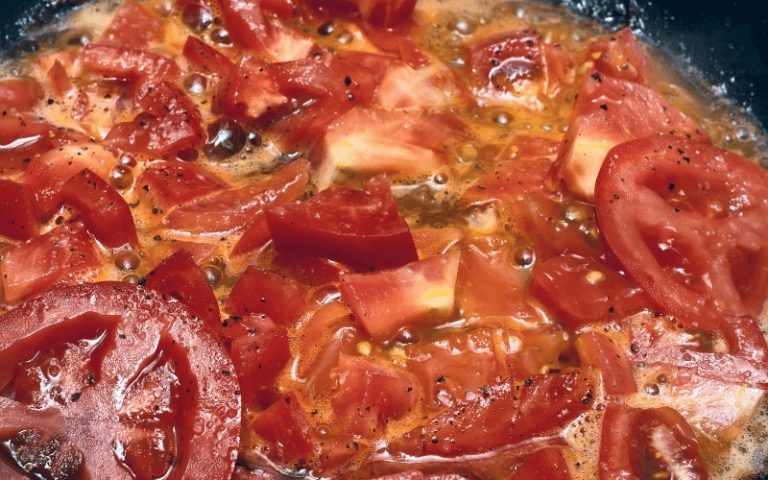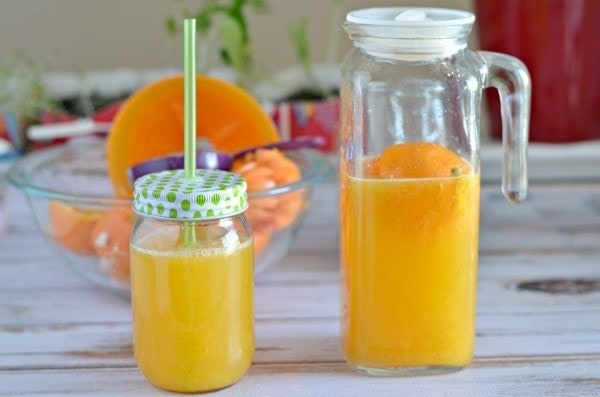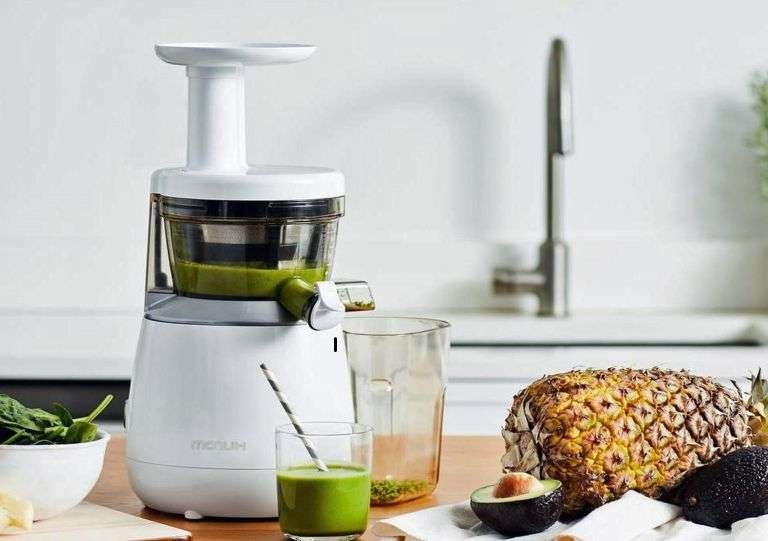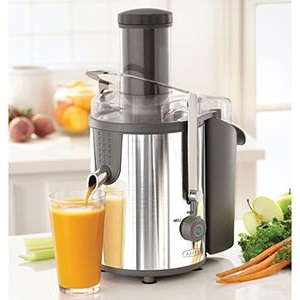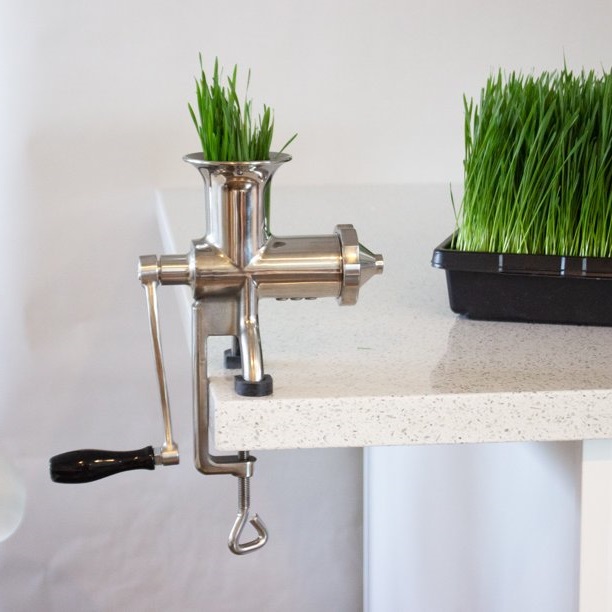Different Types of Juicers – What Are They And How Do They Work?
Find out about different types of juicers and more to know about juicing in our article. Juicers are a popular kitchen appliance that extracts juice from fruits and vegetables. However, there are several different types of juicers available on the market, and each one has its own set of strengths and weaknesses. For example, some juicers are better at juicing harder fruits and vegetables, while others are better at juicing leafy greens. Therefore, it is essential to do your research before purchasing a juicer to find the one that best suits your needs.
Table of Contents show
Types of Juicers
Finding the juicer for your needs isn’t an easy job, so make sure to know more about the different types of juicers in the next section.
First: Triturating juicers
A triturating juicer is a particular type of juicer that grinds food into tiny particles to extract the juice. This is accomplished by the juicer’s gear being assembled extraordinarily close to each other (within a tenth of a millimeter). This ensures that the most juice is extracted from the food.
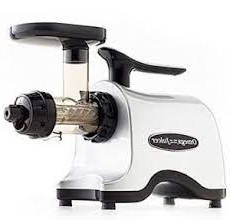
It is the first type of juicer on this list, and it works well on leafy greens, hard roots, and familiar fruits. However, these kinds of juicers aren’t made to deal with soft fruits, so they’re possibly not the best ones if you’re trying to find something that can juice softer fruits.
This slow juicer has both pros and cons. On the one hand, it juices fruits and vegetables slowly, ensuring that all the nutrients are extracted. But, on the other hand, it’s expensive and takes up a lot of space in your kitchen.
The triturating juicer is the best type of juicer for extracting the most nutrients from fruits and vegetables. These juicers produce juice that can stay fresh for up to 72 hours. The high-quality juice also has a longer shelf life, meaning you can store it in the fridge for up to three days.
1- Single-Gear Juicer (Single Auger Juicer)
A single-auger juicer is a specific type of juicer designed to extract juice from leafy greens and wheatgrass. It has one gear that presses the product against a static screen, which means it is not as flexible as other kinds of juicers. However, it does produce high-quality juice with minimal oxidation.
It has one column that pushes food against a grating surface. This type of juicer is efficient and straightforward but doesn’t produce as much juice or yield as some of the other types.
2- Vertical Gear Juicer (Vertical Gear Juicers)
Vertical gear juicers are perfect for extracting juice from hard vegetables and fruits. The gears on the side of the machine rotate in opposite directions, crushing the produce and squeezing out the juice.
Vertical gear juicers, also known as vertical column juicers, use gravity to ensure that food is ground up quickly. The produce enters the top of the machine and is pressed down by a screw or gear. This forces the juice out of the crop and into a collecting container.
3- Horizontal Gear Juicer (Horizontal Auger Juicer)
Horizontal gear juicers are often considered to be easier to set up and clean than vertical gear juicers, which have an auger that moves vertically.
On the other hand, horizontal gear juicers do not work as well on harder vegetables and fruits because the pulling power of gravity is lost. In addition, the product needs to be chopped into small pieces so that it can easily pass through the auger.
4- Twin Gear Juicers (Twin Auger Juicers)
Twin gear juicers, or twin auger juicers, use a pair of columns that grind together at low speed but high torque. This results in a slow but efficient juicing process that preserves more of the nutrients in the fruits and vegetables.
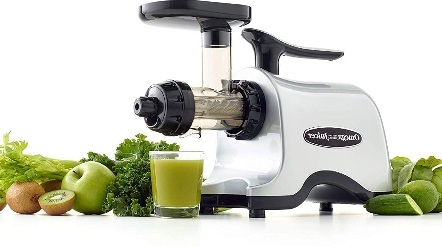
The two gear juicer is a specific type of juicer that has two gears that rotate in opposite directions. This design helps to extract more juice from hard vegetables and fruits, but it is not as effective with leafy greens and grasses.
The augers push the product into an opening that gets smaller and smaller, which causes the juice to be forced out of the produce. However, this also means that nasty things like skins, seeds, and stems can get through and end up in your juice.
Twin gear juicers are more expensive than single gear machines, and they are also a bit slower in terms of speed. However, they offer some advantages, such as the ability to extract more juice from fruits and vegetables and the fact that they are harder to clean than single-gear ones.
Second: Hand-Operated Juicers (Manual Juicers)
Manual juicers are hand-operated devices that do not require any power to operate. However, they can require significant force, making them unsuitable for people with weak hands or arthritis.
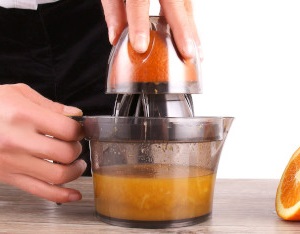
One of the best things about hand-operated juicers is that they’re easy to move and light from one place to another. They’re perfect for taking with you on trips or for using when you don’t have a lot of space.
This manual juicing method is slowly gaining popularity because the juice is made with less heat, meaning that the vitamins, minerals, and enzymes are preserved. This is a fantastic choice if you’re looking for a healthier drink, as all the nutrients are intact.
5- Lever-Action Hand Juicer
Lever-action hand juicers are designed to extract juice from fruits, vegetables, and other ingredients. They are easy to use and typically have a small footprint, making them ideal for use in small kitchens.
In order to get the most out of your hand juicer, it’s important to find one with a good pivot point. This will make it easier to use and less expensive. Additionally, look for models that have a non-slip or soft-touch handle for comfortable use.
The lever-action hand juicer is a solid and substantial tool that is also quite durable. In addition, it can withstand the vigorous use that it will likely be put through, making it a great option for those who juice often.
6- Hand-Squeeze Juicer
If you are looking for a hand-squeeze juicer, be aware that the pulp will often come shooting out of the juicer and create a mess. Make sure to have a bowl nearby to catch the ejected pulp and make cleanup quick and easy.
Some of the best hand-squeeze juicers were considered pieces of art. They were made with high-quality materials and featured beautiful designs. Plus, they delivered great performance and yielded delicious juice.
Some modern versions have an easier mechanism for kids or those with less strength, and they also come in fun colors and designs.
Although they are very easy to use and don’t have any complicated features, however, they can be quite dangerous because they’re so easy to slip with your hands and you might hurt yourself in the process. Additionally, many models tend to move around on the countertop while you’re using them, which can be frustrating.
7- Hand-Held Citrus Juicer
Manual citrus juicers are a great option when you need to juice a lot of fruits and vegetables at once. For example, they’re perfect for mixing salad dressing, making cocktails, or baking recipes. Additionally, there are a few different types of manual citrus juicers to choose from. For instance, there’s the reamer juicer and the hand-held citrus juicer.
Among the best juicers on the market, hand-held citrus juicers are a great way to extract juice without creating heat that destroys the quality of the juice. In addition, this model has few parts, making cleanup easier and small quantities quickly.
Third: Masticating Juicers
Masticating juicers are also known as slow juicers. They operate at a low speed, which helps to retain more nutrients in the juice. This kind of juicer is perfect for those who want to juice leafy greens and other hard-to-juice vegetables or for people who would like to make large quantities of juice.
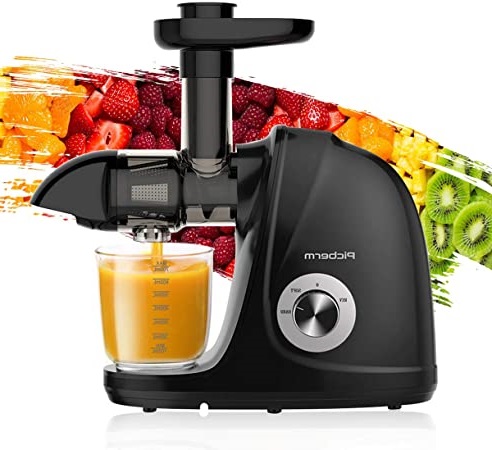
Masticating juicers are a fantastic choice if you want to make frozen juice. They can deal with frozen fruits quickly so that you can have delicious frozen juice in no time. However, they have a smaller funnel, so you’ll need to do more chopping before putting your ingredients into the juicer.
The juice they produce is thicker and fresher and produces less foam. Additionally, the masticating juicer separates at a much lower rate than other types of juicers.
8- Vertical Masticating Juicers
Vertical masticating juicers are a type of masticating juicer. They are more expensive than horizontal models, but they typically have a smaller footprint.
As technology advances and becomes more affordable, people are looking for ways to improve their health. A vertical masticating juicer is an excellent option if you don’t want to chop up fruits and vegetables. The juicer will extract the juice from the produce, leaving the pulp behind.
They are self-cleaning and also have a wider tube so you don’t have to cut your product as much. The grinding action is also vertical, which takes less space and is easier to clean.
9- Horizontal Masticating Juicers
Horizontal masticating juicers are a new kind of juicers introduced on the market. They have a wider feeding chute and are better at juicing leafy greens. However, they do take up more counter space and you will need to use a cutting board to cut your fruits and vegetables into smaller pieces.
A horizontal masticating juicer operates quietly and efficiently, producing high-quality juice that retains many of the product’s nutrients, antioxidants, enzymes, and flavor. However, because there are more parts to this type of juicer, it also requires more cleanup.
Fourth: Centrifugal Juicers
Centrifugal juicers are the most popular type of home juicer. They take fruits and vegetables through a feed tube and directly into contact with a blade that shreds them at 6,000-14,000 RPM. The high speed causes the juice to be forced out of the fruit or vegetable and into a glass container. The downside to this type of juicer is that it produces up to 30% solids in the form of skins, seeds, and stems.
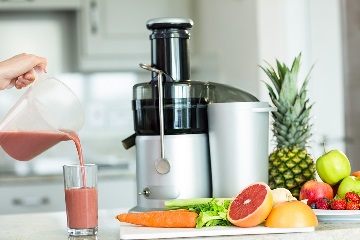
They are popular because they stand straight so they take up small space on your kitchen counter and they are the cheapest choice. However, these juicers produce less juice than other kinds of juicers and they also produce more heat, which can damage some nutrients in the juice.
They are quite noisy and cannot process leafy greens or wheatgrass well. Additionally, more oxidation takes place on this type of juicer, creating a foam on top of the fresh juice and causing it to separate quickly. Finally, they aren’t meant to juice nuts.
10- Vertical Centrifugal Juicers
Vertical centrifugal juicers are like manual juicers; only the motor is at the bottom of the device and spins. This causes the juice to be extracted from fruits and vegetables more quickly.
They are a type of juicer where the blade is spinning at the bottom of the machine. This design means that your hand isn’t close to the blade, making it safer to use.
Fifth: Electric Hydraulic Juicers
Electric hydraulic juicers are known for extracting high-quality juices from fruits and vegetables. However, they are also one of the most expensive types of juicers on the market. A press extracts 99% of the liquid in a piece of fruit or vegetable, so you’re getting the most out of your produce, while 1% of the juice is left behind when cold-pressed and it is extremely dry. The upside to these juicers is that their juices last from 3 to 5 days without any degradation in quality or taste.
They work by using thousands of pounds of pressure per square inch to extract juice from fruits and vegetables. The juice is then heated minimally, preserving as many nutrients and enzymes as possible. Although they can be hard to clean, the quality of juice they produce is great.
Sixth: Steamer Juicers
A steamer juicer is a type of juicer that uses steam to break down the cell walls of fruits and vegetables instead of using a crushing mechanism. This results in a juice with more nutrients because it preserves more enzymes and vitamins.
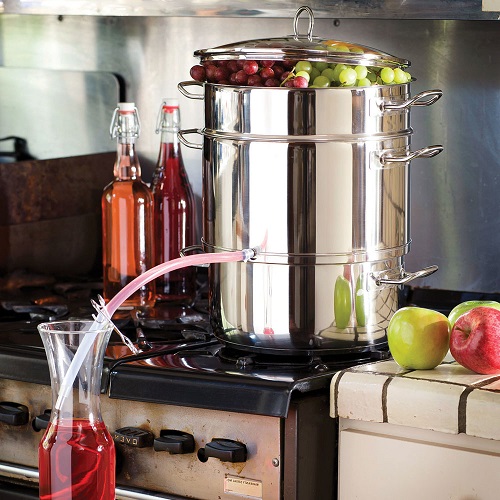
Though steamer juicers are not as typical as other types of juicers, they can still be used to juice fruits and berries. The juice is collected in a vessel that can be accessed through a hose, making it easy to pour the juice into a glass or container.
The steamer juicer is safe and easy to use but becomes very hot during normal operations.
Seventh: Commercial Juicers
Commercial juicers are a type of industrial juicer that is used to extract juice from fruits and vegetables. They are often classified by the number of rollers and plates they have, which helps crush the produce.
Commercial juicers are the heavy-hitters of the juicing world. They typically have three or more stages for grinding and then pressing the produce into juice. What’s more, they usually come with a wider feeding chute so you can add more significant chunks of fruit without having to pre-cut everything.
They are made for high-volume use and can also handle the needs of restaurants or busy cafes.
Eighth: Blender Juicers
A Blender Juicer is a two-in-one appliance that combines the functions of a blender and a juicer. This type of juicer is becoming more and more popular because it is efficient and takes up less space on the countertop.
There are many different types of blender juicers on the market these days. They come in all shapes and sizes, with various attachments and levels of power. The most important thing to consider when purchasing a blender juicer is how often you will use it. If you plan to make juice every day, then you will need a more powerful machine than if you only plan to use it once a week.
It is designed with different blades suited to various blending jobs. In addition to that, the comfortable handle makes its usage easier for everyone.
What to Consider Before Buying a Juicer
When searching for the best juicer machines, there are some factors you need to keep in mind.
Type of Product
When looking for a juicer, finding one with high yields is crucial. This means that the juicer will be able to produce more juice from each fruit or vegetable.
Masticating juicers are a better investment in the long term as they produce less waste and are easier to clean. They also tend to have a lower cost of ownership, making them more economical in the long run.
A centrifugal juicer is an excellent choice for those who are searching for a high-quality product that is also less expensive. These juicers work by using blades to chop up the fruits and vegetables, and then the juice is extracted by spinning at high speed. This kind of juicer produces more foam than other kinds, but it is still a good choice for people who want to get the most juice out of their product.
Storage and Size
When considering which juicer to buy, size and storage are one of the most important factors. Some juicers are bulky and require a lot of counter space, while others are smaller and can be stored in a cabinet or drawer. Additionally, consider how much storage space you will need for your juice ingredients.
Vertical juicers take up less counter space and are ideal for smaller kitchens. If you’re tight on storage space, a vertical juicer is the way to go.
Smaller juicers have their pros and cons. They tend to make smaller batches of juice, but they’re also easier to store. If you’re looking for a juicer that can handle many volumes, you’ll need to pick one that’s a little bigger.
Noise and Speed
Centrifugal Juicers are a type of juicer that use blades to spin at high speeds to extract the juice from the produce. They are faster but can also create more noise. Masticating Juicers are a type of juicer that crush and grind the produce to extract the juice.
Masticating juicers are ideal if you’re looking for a quieter machine. The low-speed crushing and pressing of the fruits and vegetables means less noise, so household members can remain undisturbed while you get your juice on.
Clean up and Ease of use
The juicer is designed to be easy to use- you can just put in the fruits or vegetables, and it will start juicing. The juicer is also easy to clean- all of the parts come apart, so you can wash them easily.
Some juicers on the market are versatile and can make nut butter, sorbet, and baby food in addition to extracting juice from fruits and vegetables. Additionally, these machines have large feed tubes, which reduce the amount of time needed to prep produce for juicing and the time it takes to feed it into the machine.
Certain juicers come with specialized brushes that make cleaning much easier. Additionally, if a juicer is dishwasher-friendly, it will be much easier to clean overall. Make sure to keep this in mind when shopping for a juicer.
Price
Juicers come in a wide range of prices, with some models costing as little as $30 and others costing more than $600. Therefore, it is important to do your research before purchasing a juicer to get the best value for your money.
In general, more expensive juicers produce a higher juice yield and less pulp. This is because they have features like multiple speeds and stronger motors that help extract more juice from fruits and vegetables. Additionally, these juicers are often made with durable materials that can withstand long-term use.
Safe parts for Dishwashing
Dishwasher-safe juicers are a newer type of juicer that is made to be put in the dishwasher. This makes it much easier to clean than other juicers that require manual cleaning.
Dishwasher-safe parts save you time and energy in the long run. You don’t have to worry about hand-washing the juicer or any of its parts. You have to put their parts in the dishwasher to do their job.
Auto Pulp Discharge
The auto pulp ejection system on this juicer automatically ejects the pulp into the pulp collector so you can juice quickly and easily.
One of the best features of an auto pulp ejection juicer is that you don’t have to dirty your hands by removing the pulp. Instead, the machine will do it for you, making cleanup a breeze.
If you like me and prefer clean juicing, look for a juicer with the auto pulp ejection feature. This will help keep your kitchen clean while you juice and make the cleanup process much easier.
Free Book for Recipes
Juicing recipes can be beneficial for beginners who have just started juicing. They provide a variety of recipes that will help you get started and give you some ideas for future juices.
The recipe book is an excellent feature because it provides the exact amount of ingredients to juice without burdening your appliance. You can also find recipes for soups and sauces in the recipe book.
Warranty
When you purchase an appliance, it will come with a warranty that lasts for a certain amount of time. The length of the warranty generally depends on how much the appliance costs.
Interestingly, a cheap juicer model offers a 1 to 2-year warranty, while the more expensive juicers provide more than a 5-year warranty. This is something to consider when purchasing a juicer, as it is essential to have peace of mind that the product will last for a long time.
Importance of Juicing for your Health
Juicing is a great way to give the body the nutrients it needs. It can also be a refreshing substitute for sugary drinks. There are various kinds of juicers, and each one has its benefits and drawbacks.
Though juicing has benefits for your health, it is not as good as eating whole fruits and vegetables. The act of juicing breaks down the cell walls of fruits and vegetables, which means that you lose some of the nutrients. However, if you struggle to eat the recommended five servings of fruits and veggies a day, juicing can be an excellent way to hit that goal.
While juice does have health benefits, it is not recommended to replace all meals with juice. Juice provides a concentrated source of nutrients and can help you meet your daily intake goals, but make sure to include other healthy foods in your diet.
FAQ’s
What foods can I blend into different juicers?
Some various fruits and vegetables can be blended into different juicers. Some popular combinations include blending tomatoes, kale, spinach, carrots, celeries, and avocados to make vegetable juice; or blending oranges, mangoes, bananas, and apples to make fruit juice. There are never-ending possibilities when it comes to juicing!
How long is the lifespan of different juicers?
The average lifespan of a juicer is 4 to 5 years. Of course, juicers can last longer with proper care, but the parts will wear down over time and eventually need to be replaced.
The lifespan of a juicer depends on how many times it’s used and how well it’s kept. Generally, stainless steel juicers last longer than plastic ones because they’re more durable. However, if you take care of your plastic juicer and don’t use it too frequently, it should last for a while too.
What effect does the juicer leave on the taste?
When juicing, the pulp and fiber of the fruits or vegetables are isolated. This changes the texture of the food and can affect the taste.
One commonly asked question is how the type of juicer affects the smoothie’s taste. For example, blending fruits such as bananas, apples, and pears makes healthy smoothies better. Additionally, using leafy greens such as kale or spinach will give the drink a more earthy flavor.
Can I lose weight if I drink more juice?
While juicing may help with weight loss in the short term, it is essential to remember that a calorie deficit must be maintained for weight loss to occur. Juicing can be a part of creating this deficit, but other lifestyle changes will also need to be made.
There are a lot of contrasting reports on if juicing really helps with weight loss or not. The thing to remember is that, like anything else, juicing should be done in moderation. For example, if you’re juicing with high-calorie fruits and vegetables, you may be packing in more calories than you would if you were just eating those same items whole. However, juice fasts can be continued for a few days or weeks without any significant health risks as long as you’re drinking plenty of fluids and taking in enough nutrients.
What are vegetables should I not juice?
Some vegetables should not be juiced because they release toxic substances into the bloodstream. These vegetables include cabbage, cauliflower, broccoli, and leafy green vegetables. Adding these vegetables to your juice may cause you to experience nausea, vomiting, and diarrhea.
What is the difference between blending and juicing?
Juicing and blending are both great ways to get the nutrients from fruits and vegetables, but there are some key differences. Juicing separates the pulp and skin from the liquid, while blending keeps all of the ingredients together. This means that you’ll lose some fiber in the fruit or vegetable if you juice. Although if you blend, you’ll get all of the fiber.
A blender is a versatile kitchen appliance that can be used to make dips, sauces, cocktails, nut butter, soups, and other condiments. In addition to smoothies, blenders can also be used to create textured drinks and meals. This makes them a valuable tool for the home cook.
Conclusion
Juicers come in all shapes and sizes, with various colors to choose from. There are three main types of juicers- masticating, centrifugal, and cold press. Each kind has its distinguished benefits and downsides. Knowing which type of juicer is best for you will help you make the most out of your juicing experience.
Juicers come in all shapes and sizes, and the best juicer for you often depends on your needs. For example, if you’re looking for a juicer that will help you make large quantities of juice quickly, then a centrifugal juicer might be the best option. On the other hand, you’ll need a masticating juicer if you want to juice leafy greens or wheatgrass. And if you’re just getting started with juicing, then a simple citrus juicer might be the best choice.

